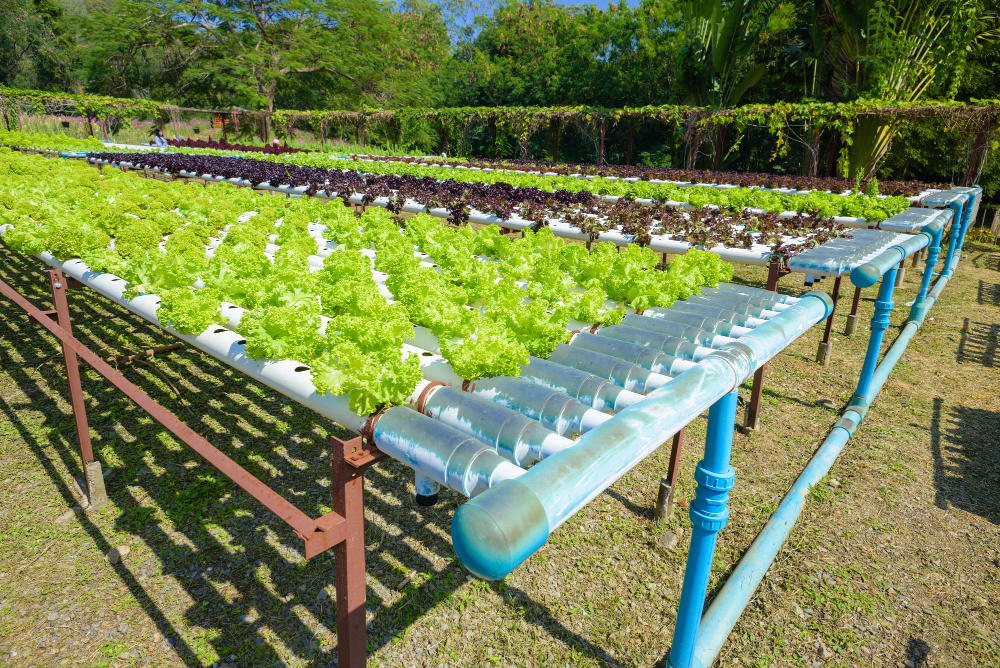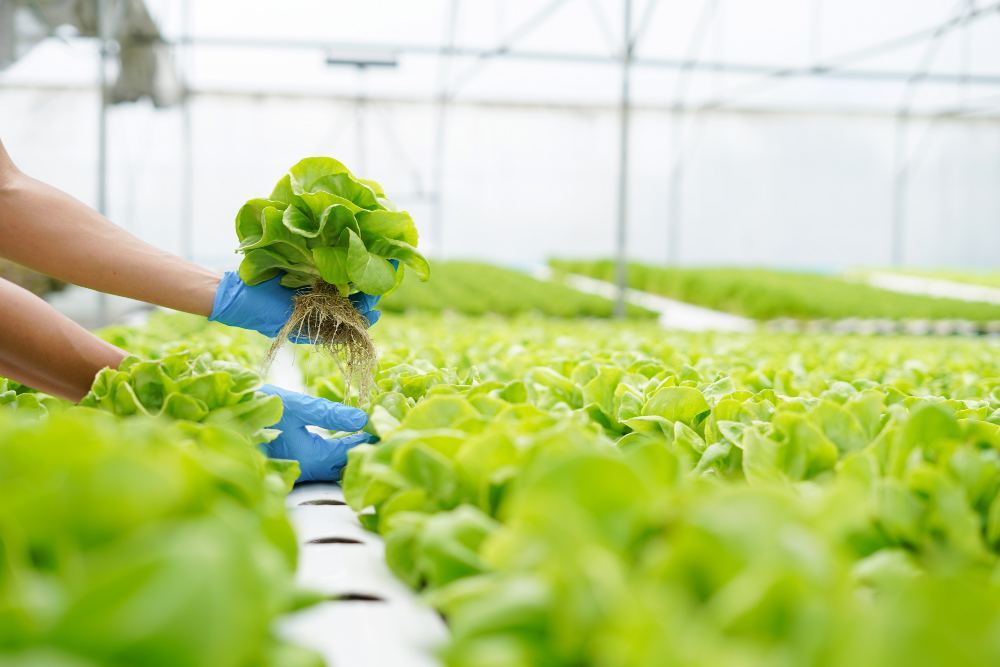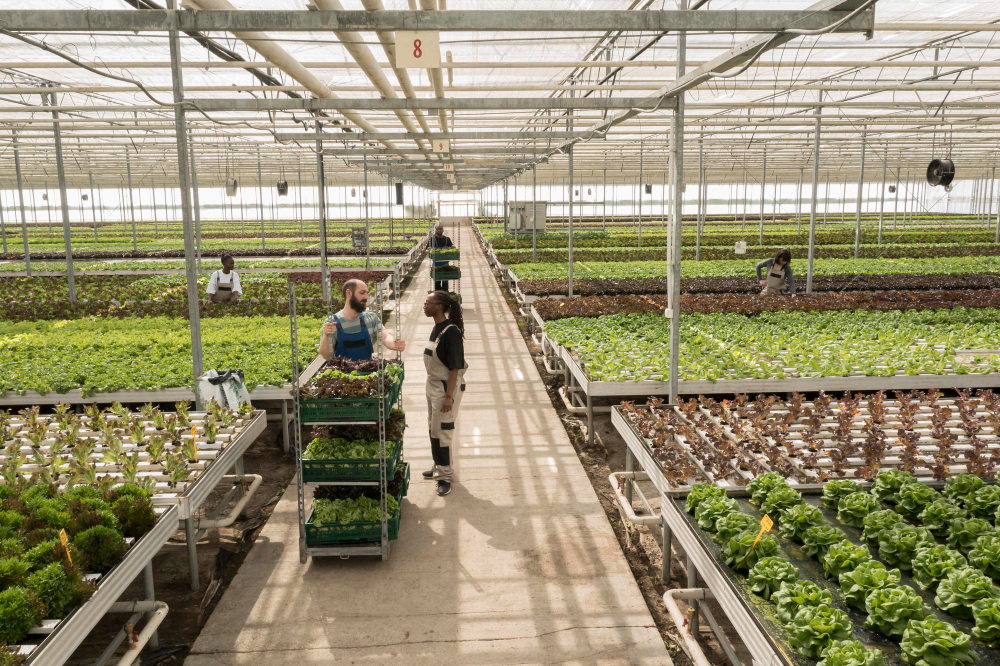Last updated on
Hydroponics, the art and science of growing plants in a nutrient-laden water solution rather than soil, has revolutionized the agricultural sphere. This method offers a sustainable and efficient alternative for cultivating plants, particularly in urban settings where space is at a premium.
It eliminates the need for vast tracts of arable land, drastically reducing water waste and negating the reliance on chemical fertilizers and pesticides.
This introduction will explore the myriad of benefits hydroponic systems provide, such as year-round crop production, faster plant growth, and the potential for higher yields, making it an advantageous approach for the future of farming.
Space Efficiency of Hydroponics

Hydroponic systems can be established almost anywhere and require much less space than traditional soil-based agriculture. This makes them especially suitable for urban environments where space is limited.
Growing vertically is a popular approach in hydroponics, allowing for more plants per square foot than horizontal methods. This not only optimizes available space but also can lead to increased productivity and yield.
The modular nature of hydroponic systems means they can be expanded or reconfigured to fit the specific spatial constraints of an urban farm or home garden, ensuring that even the smallest areas can be utilized effectively for plant growth.
Having a grow tent or dedicated hydroponic area also means that the environment can be controlled precisely, providing the ideal conditions for plants to flourish. This eliminates the risk of harsh weather conditions, droughts, or pests damaging crops and resulting in crop failure.
Additionally, a grow tent’s size, material used and ventilation can make a big impact, according to Pakenham Hydroponics, this can also be done sustainably. Keep in mind, however, that once you have determined the correct temperature and humidity your plants are comfortable in fresh air flow will need to be consistent.
Water Conservation
Hydroponic systems use significantly less water than soil-based gardening — often up to 90% less. This is due to the recirculation of water in a closed system, where evaporation and runoff are minimized.
By using a nutrient-rich water solution, plants have direct access to what they need for growth, reducing the waste of water and nutrients, and allowing for precise control over plant nutrition. This conservation is crucial in areas where water is scarce, and it also represents an environmentally friendly alternative that reduces the overall water footprint of agricultural practices.
Controlled Environment Agriculture

Hydroponic systems provide the ability to control every aspect of the plant-growing environment, including temperature, light, CO2 levels, and nutrition, making it possible to optimize conditions for plant growth.
The level of control afforded by hydroponic systems mitigates the risks posed by pests and diseases, which are more easily managed in a contained environment without the use of harmful pesticides. Such precise control leads to greater consistency in produce quality and enables year-round cultivation, independent of external weather conditions, thus contributing to food security.
Additionally, hydroponic systems can be set up in locations closer to consumers, reducing transportation costs and emissions associated with traditional farming methods. For example, rooftop hydroponic systems in urban areas can provide fresh, locally-grown produce to nearby communities.
Rapid Plant Growth and Higher Yields
Plants grown hydroponically mature up to 25% faster than those grown in soil due to their direct access to necessary nutrients and optimal growth conditions. Hydroponic systems allow plants to use energy more efficiently since their roots do not need to expand to search for nutrients, leading to faster growth and quicker harvest times.
Higher yields are achieved through the dense planting of crops and the ability to grow multiple layers of plants vertically, making hydroponics a highly productive farming method.
With the increasing demand for food production to support a growing population, hydroponics offers an efficient and sustainable solution that can help meet these demands while also reducing pressure on conventional farming practices. Plus, the potential for higher yields and faster plant growth makes hydroponics a promising avenue for increasing food production in a controlled and sustainable manner.
Sustainability and Environmental Impact
Hydroponics is a viable solution for sustainable farming practices, minimizing the land required for crop production, and utilizing resources like water and nutrients more efficiently.
By reducing the need for chemical fertilizers and pesticides, hydroponics lessens the environmental impact of agriculture on surrounding ecosystems, contributing to cleaner soil and water sources. The potential to recycle and reuse water within hydroponic systems demonstrates a commitment to reducing waste and promoting a more sustainable approach to agriculture.
Moreover, the controlled environment of hydroponic systems means that fewer resources are needed to maintain and harvest crops, reducing energy consumption and associated greenhouse gas emissions. As consumers become increasingly aware of the environmental impact of their food choices, hydroponically grown produce presents a more environmentally-friendly option.
Accessibility and Community Impact
Accessibility and community impact are among the most noteworthy benefits of hydroponics. Hydroponic gardening provides a means for those with limited space, such as city dwellers, to cultivate their food, fostering a sense of self-sufficiency and reducing reliance on distant agricultural sources.
It opens up avenues for community gardens and educational programs that can engage local populations, promoting healthier eating habits and increasing access to fresh produce in food deserts.
Additionally, hydroponic systems can be scaled to fit various community sizes, from small residential setups to larger commercial ventures. This scalability not only bolsters local economies but also encourages communal participation and empowerment through urban agriculture initiatives.
With hydroponics, communities gain the opportunity to grow closer through collective efforts while addressing their food requirements sustainably.
Also, hydroponics can be adapted to fit the needs of specific communities and cultures, making it a versatile and inclusive method of farming. Not onyl is it an efficient way to grow food, but hydroponics can also serve as a tool for social change and empowerment within communities.
The Takeaway
Hydroponics represents a significant step forward in agricultural innovation, offering a myriad of benefits from space efficiency to environmental sustainability. By maximizing limited urban spaces, conserving water, and controlling growing conditions, hydroponics sets the standard for high-efficiency and high-yield farming.
This method circumvents traditional agricultural limitations and provides a means to not only produce food reliably and sustainably but also empower communities and green urban landscapes. As we move further into the 21st century, hydroponics stands poised to play a vital role in addressing the global challenges of food security and environmental sustainability, making it a cornerstone of modern agriculture.
Related reading:
Table of Contents





